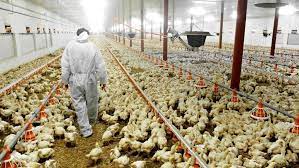The Debate on Protective Gear
The issue of whether workers on farms should be required to wear protective gear to guard against the bird flu virus has sparked controversy within the agricultural community. While some advocate for the use of protective equipment as a preventive measure, others resist the push, citing various reasons and concerns.
Understanding the Concerns
- Safety vs. Comfort: Farmers may prioritize the comfort and convenience of their workers over stringent safety measures.
- Cost Considerations: Implementing protective gear can incur additional expenses for farmers, leading to resistance, especially for small-scale operations.
Challenges Faced by Farmers
1. Operational Challenges
- Work Efficiency: Some farmers believe that wearing protective gear could hinder the efficiency and productivity of workers, particularly during labor-intensive tasks.
- Logistical Issues: Ensuring the availability and proper maintenance of protective equipment pose logistical challenges for farm owners.
2. Cultural Factors
- Traditional Practices: In certain farming communities, there may be entrenched cultural norms or beliefs that discourage the use of protective gear.
- Resistance to Change: Implementing new safety protocols may face resistance from workers accustomed to established routines.
Addressing the Concerns
1. Education and Awareness
- Information Campaigns: Providing comprehensive education and training on the risks of bird flu and the importance of protective measures can help alleviate concerns and promote compliance.
- Demonstration of Effectiveness: Highlighting real-world examples where the use of protective gear has proven effective in preventing disease transmission can sway opinions.
2. Financial Support
- Subsidies and Assistance: Government agencies and agricultural organizations can offer financial incentives or subsidies to help offset the costs of acquiring protective equipment for farmers.
- Collaborative Efforts: Partnering with industry stakeholders to negotiate bulk discounts or group purchasing arrangements can make protective gear more affordable for farmers.
Balancing Safety and Practicality
While the resistance to wearing protective gear against the bird flu virus is understandable, it’s essential to prioritize the health and safety of farm workers. By addressing concerns, providing support, and fostering a culture of safety, we can work towards finding a balance that protects both workers and agricultural interests.




